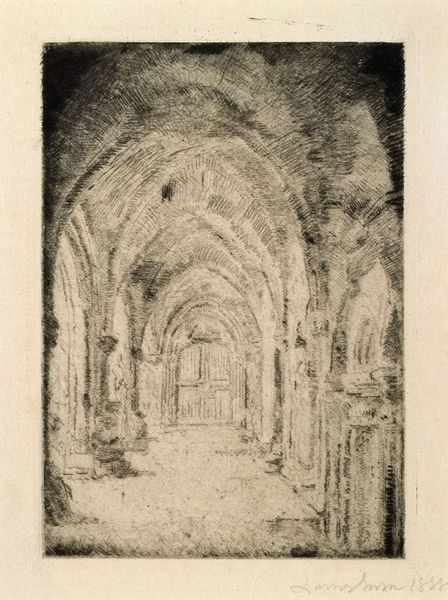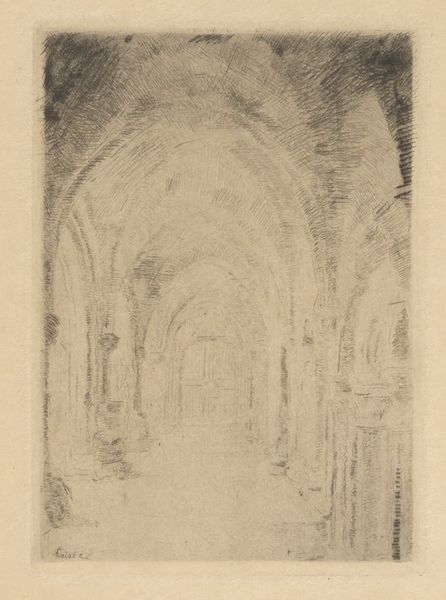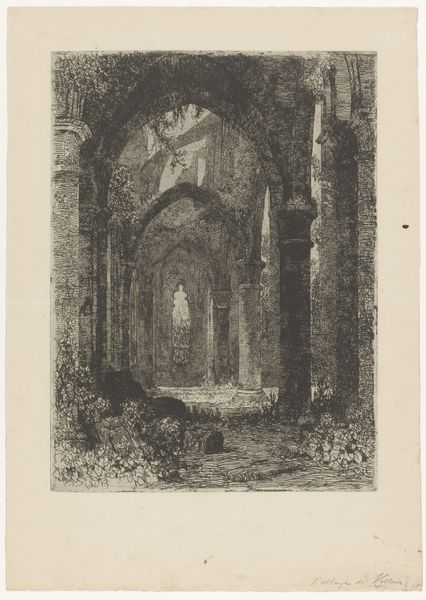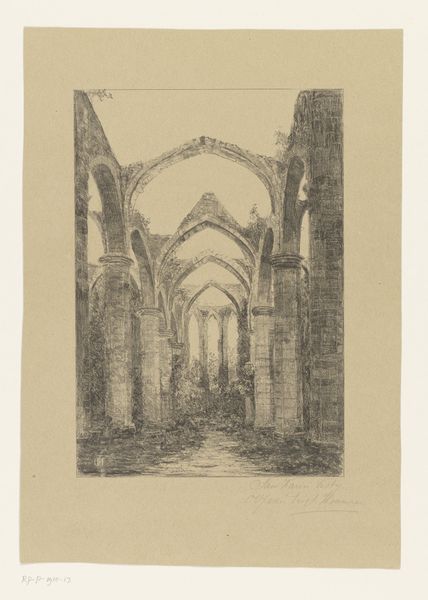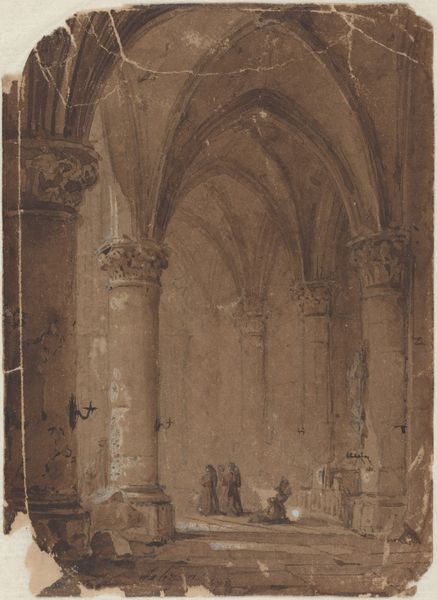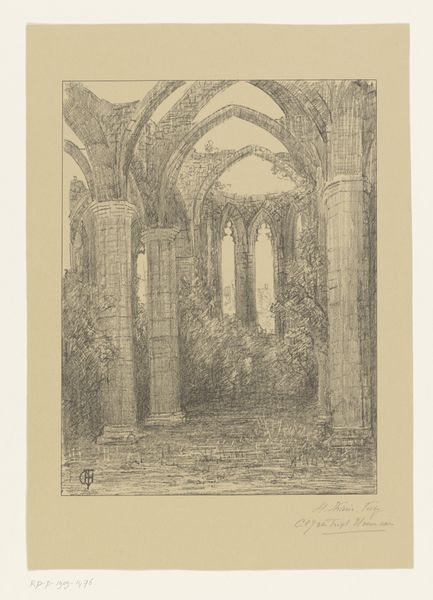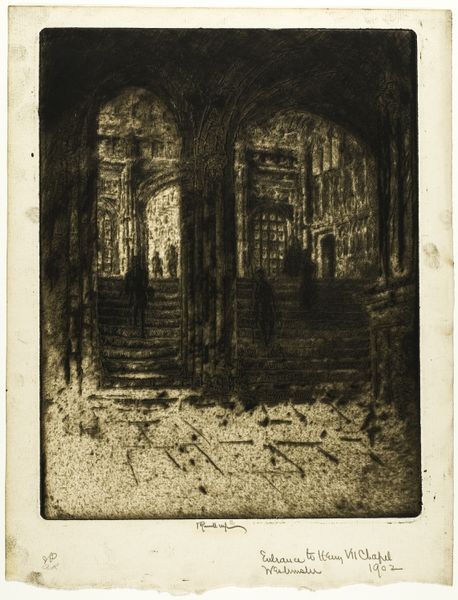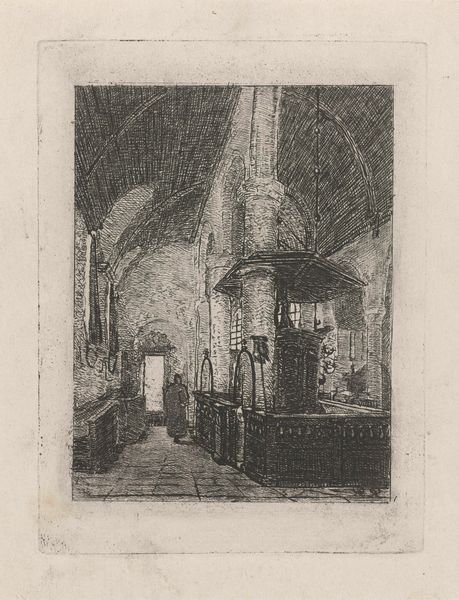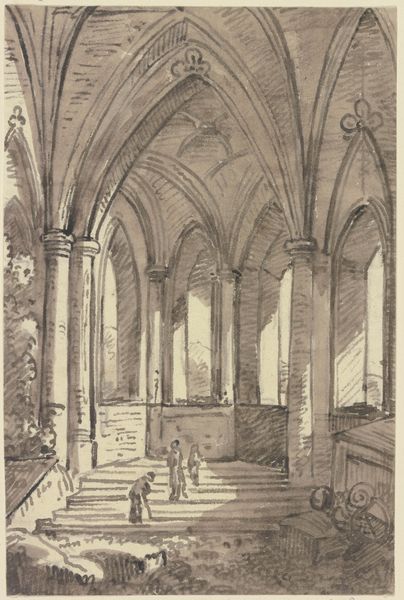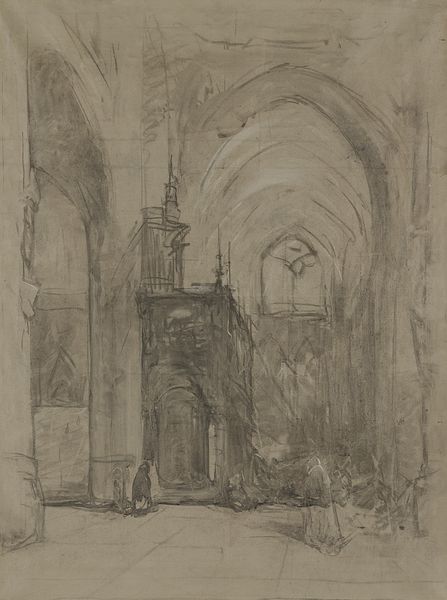
drawing, print, etching
#
drawing
# print
#
etching
#
landscape
#
realism
Dimensions: height 129 mm, width 110 mm
Copyright: Rijks Museum: Open Domain
Curator: Today we're looking at Hendricus Nicolaas Johannes Eernink's "Zijbeuk van de Grote of Sint-Bavokerk in Haarlem," a 1925 etching. It's a strikingly detailed interior scene. Editor: It has an almost haunted quality to it, doesn't it? All those heavy shadows and soaring arches, drawn with such deliberate linearity. I feel a strong pull into the space. Curator: Absolutely. I'm intrigued by Eernink’s choices in process. Etching, with its reliance on acid and controlled decay to produce a reproducible image, seems apt to portray a site, like a church, so embedded in history, construction, and material transformation. The work itself is a form of social documentation, mediated by a deliberate process. Editor: Yes, and note how the artist manipulates light and dark; a true study in chiaroscuro. It gives the piece a depth, almost theatrical, that highlights the formal architectural elements—the arches, the pillars, and the vaulted ceiling—giving emphasis to the construction. It really speaks to a semiotic understanding of space. Curator: Right, this wasn’t a simple reproduction. Think of the labour invested, both physical and intellectual, into its making! The church itself embodies collective effort—consider its history, perhaps impacted by war and its impact in this etching through realism? Editor: Indeed, while realism grounds us, the ethereal rendering creates an almost otherworldly atmosphere. It’s more than just architectural accuracy; it’s the suggestion of grandeur but at the same time intimates a sense of decline, perhaps reflecting larger shifts in societal belief. Curator: I agree. Seeing this now prompts contemplation regarding faith and labor in interwar Europe, and about print production within the art world and its significance for wider access. Editor: Ultimately, Eernink delivers us not merely a depiction of a cathedral aisle but a visual essay that invites our introspective regard and consideration of our collective cultural ethos.
Comments
No comments
Be the first to comment and join the conversation on the ultimate creative platform.
